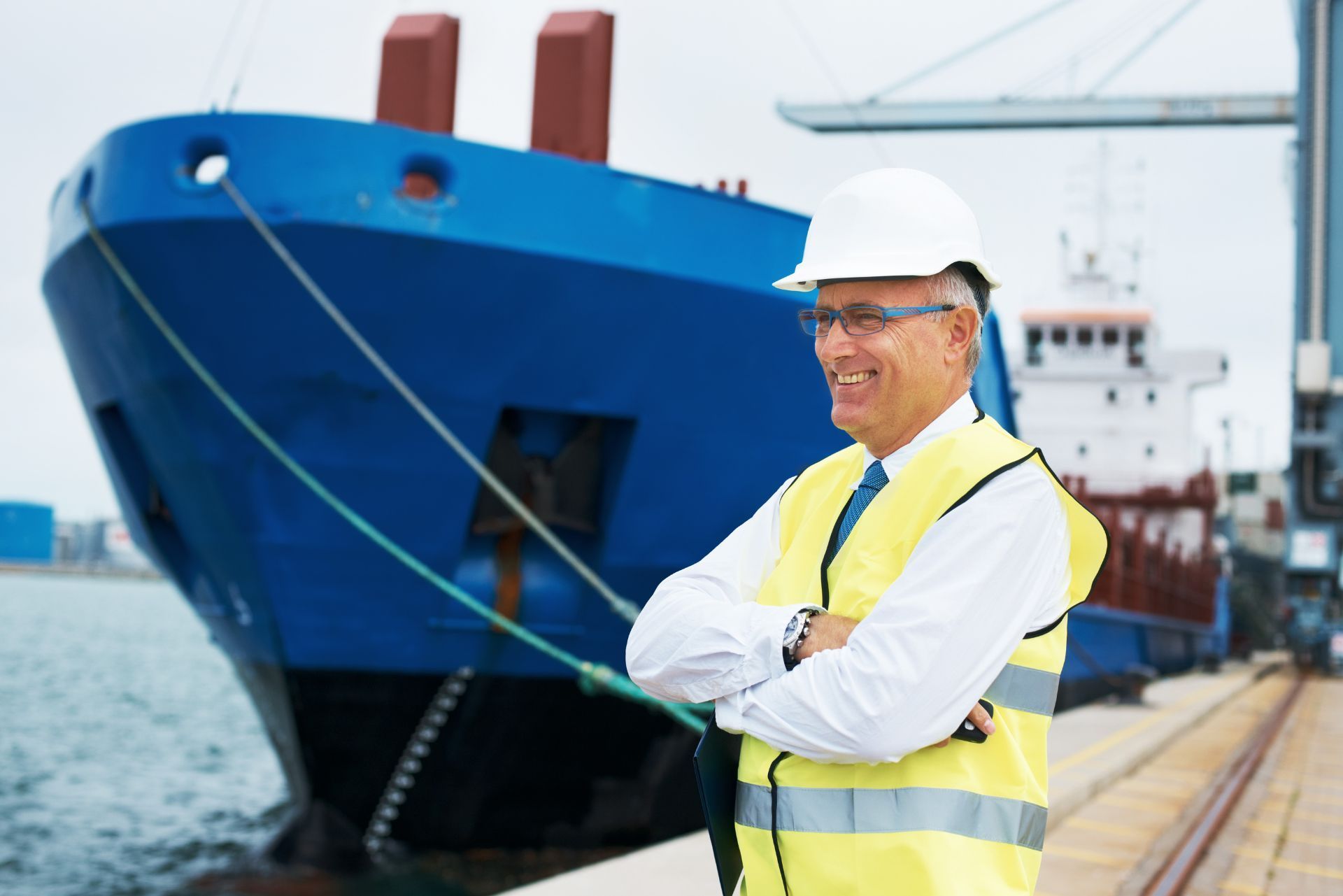
Top 3 Recommended Policies

Inland marine insurance is a specialized type of coverage that protects goods, materials, and equipment while they are being transported over land or stored away from the primary location. In Texas, where industries such as oil and gas, agriculture, and construction thrive, understanding the nuances of inland marine insurance is crucial for businesses and individuals alike. This article delves into the essentials of Texas inland marine insurance, providing insights into its importance, coverage options, and key considerations.
Understanding Inland Marine Insurance
Inland marine insurance originated from ocean marine insurance, which covered goods transported over water. As trade evolved and goods began to be transported over land, the need for a specialized insurance product emerged. Inland marine insurance now covers a broad range of risks associated with the movement and storage of goods and equipment. This evolution reflects the changing landscape of commerce, where the logistics of land transportation have become just as critical as maritime shipping.
What Does Inland Marine Insurance Cover?
Inland marine insurance encompasses various types of coverage tailored to meet the needs of different industries. Common coverage options include:
- Transportation Coverage: Protects goods while they are in transit, whether by truck, rail, or other means.
- Equipment Coverage: Covers tools, machinery, and equipment that are often moved from one job site to another.
- Bailee Coverage: Provides protection for businesses that temporarily hold others' property, such as repair shops or storage facilities.
Additionally, inland marine insurance can cover specific items such as fine art, jewelry, and other high-value goods that require specialized protection. This flexibility makes it a vital asset for many Texas businesses. For instance, art galleries and museums often rely on inland marine insurance to safeguard their valuable collections during exhibitions or while in transit to other locations. Similarly, construction companies benefit from equipment coverage that ensures their tools and machinery are protected against theft or damage while on the move.
Why is Inland Marine Insurance Important in Texas?
Texas is home to a diverse economy, with industries ranging from energy to agriculture. The vastness of the state means that goods and equipment frequently traverse long distances, increasing the risk of loss or damage. Inland marine insurance is essential for the following reasons:
- Protection Against Loss: Accidents, theft, and natural disasters can occur during transportation. Inland marine insurance mitigates these risks.
- Compliance with Contracts: Many contracts require businesses to maintain specific insurance coverage, making inland marine insurance a necessity for compliance.
- Peace of Mind: Knowing that goods and equipment are insured allows businesses to operate more confidently, focusing on growth and success.
Moreover, Texas's unique geographical features, including its expansive highways and bustling ports, contribute to the complexity of logistics and transportation. Businesses must navigate a variety of challenges, from unpredictable weather patterns to the potential for road accidents. Inland marine insurance not only provides a safety net for these risks but also fosters a culture of responsibility and diligence among businesses. By ensuring adequate coverage, companies can better manage their operations and protect their assets, ultimately leading to a more resilient economy.

Types of Inland Marine Insurance Policies
Inland marine insurance policies can vary significantly based on the specific needs of the insured. Understanding the different types of policies available can help businesses select the right coverage.
All-Risk Coverage
All-risk coverage is one of the most comprehensive options available. It protects against a wide range of risks, excluding only those specifically stated in the policy. This type of coverage is ideal for businesses that require extensive protection for their goods and equipment. For example, a logistics company transporting high-value electronics would benefit greatly from all-risk coverage, as it would safeguard against potential losses from a multitude of unforeseen events, such as accidents during transit or natural disasters. Additionally, this type of policy often includes coverage for both direct and indirect losses, ensuring that businesses are protected not just from physical damage but also from the financial repercussions that may arise from business interruptions.
Named Perils Coverage
Named perils coverage, on the other hand, only protects against risks explicitly listed in the policy. This could include fire, theft, or vandalism. While this option may be more affordable, it is essential for businesses to carefully consider the risks they face to ensure adequate protection. For instance, a small retail store might opt for named perils coverage to keep costs down, but they must evaluate whether the listed perils adequately cover their most significant risks. It’s crucial for business owners to conduct a thorough risk assessment and possibly consult with an insurance advisor to determine if this type of coverage aligns with their operational vulnerabilities.
Specific Coverage Policies
Some businesses may require specific coverage tailored to their unique needs. For instance, a construction company may need coverage for heavy machinery, while an art gallery may require protection for valuable artwork. Custom policies can be designed to meet these specific requirements, providing targeted protection. Furthermore, businesses that frequently transport goods across state lines might also seek specialized coverage that addresses the complexities of interstate commerce, including regulatory compliance and liability issues. This tailored approach not only enhances the security of the assets but also instills confidence in business operations, knowing that they are adequately protected against the unique challenges they face in their respective industries.
Factors Influencing Inland Marine Insurance Costs
The cost of inland marine insurance can vary widely based on several factors. Understanding these factors can help businesses anticipate their insurance expenses and make informed decisions.
Type of Goods or Equipment
The nature of the goods or equipment being insured plays a significant role in determining premiums. High-value items or those that are more susceptible to damage or theft may incur higher costs. For example, insuring fine art will typically cost more than insuring construction tools. Additionally, specialized equipment, such as medical devices or technology used in research, may require unique coverage options, further influencing the overall cost. Insurers often evaluate the specific risks associated with each type of item, including how they are transported and stored, which can lead to variations in premium rates.
Geographic Location
In Texas, the geographic location of the business can also impact insurance costs. Areas prone to natural disasters, such as hurricanes or floods, may lead to higher premiums due to the increased risk of loss. Additionally, urban areas with higher crime rates may also see increased costs. Furthermore, the distance from major transportation routes can also play a role; businesses located far from these routes may face higher premiums due to the increased risk of delays and potential loss during transit. Insurers often analyze local market conditions and environmental factors to tailor their policies accordingly, making it crucial for businesses to understand their specific location's risk profile.
Claims History
A business's claims history can significantly affect its insurance premiums. Companies with a history of frequent claims may face higher rates, while those with a clean record may benefit from lower premiums. Insurers assess risk based on past behavior, making it essential for businesses to maintain good practices to keep costs down. Moreover, the nature of previous claims can also influence future premiums; for instance, frequent claims related to theft may prompt insurers to impose stricter terms or higher deductibles. Businesses are encouraged to implement risk management strategies, such as regular training for employees on safe handling and transportation of goods, to minimize the likelihood of claims and demonstrate their commitment to reducing risk to insurers.
Choosing the Right Inland Marine Insurance Provider
Selecting the right insurance provider is crucial for obtaining the best coverage at a competitive price. Here are some key considerations when evaluating potential providers:
Reputation and Financial Stability
Researching the reputation and financial stability of insurance companies is vital. Look for providers with a strong track record of customer service and claims handling. Online reviews and ratings from independent agencies can provide valuable insights into a company's reliability. Additionally, consider checking the financial ratings from organizations such as A.M. Best or Standard & Poor's, which evaluate the financial health and claims-paying ability of insurers. A provider with a solid financial foundation is more likely to fulfill its obligations during challenging times, ensuring peace of mind for policyholders.
Coverage Options and Flexibility
Different businesses have varying needs, so it’s essential to choose a provider that offers a range of coverage options. Flexibility in policy customization allows businesses to tailor their insurance to meet specific requirements, ensuring adequate protection. For instance, some providers may offer specialized endorsements for high-value items, while others may include coverage for equipment breakdown or transit-related risks. It's beneficial to engage in discussions with potential insurers about your unique business operations to identify the most suitable coverage solutions that align with your risk profile.
Customer Service and Support
Effective customer service is crucial when dealing with insurance matters. A provider that offers responsive support can make a significant difference, especially when filing claims or seeking assistance with policy questions. Look for insurers known for their commitment to customer satisfaction. Furthermore, consider the availability of multiple communication channels, such as phone, email, and live chat, which can enhance the accessibility of support. Some providers may also offer dedicated account managers who can provide personalized assistance and guidance, ensuring that you have a reliable point of contact for all your insurance needs. This level of support can be invaluable, particularly during the claims process, where timely communication can expedite resolution and minimize stress.
Common Exclusions in Inland Marine Insurance Policies
While inland marine insurance provides comprehensive coverage, it is essential to be aware of common exclusions that may apply. Understanding these exclusions can help businesses avoid unexpected gaps in coverage.
Wear and Tear
Inland marine insurance typically does not cover losses due to normal wear and tear. Businesses must maintain their equipment and goods to prevent deterioration, as insurers will not cover damages resulting from lack of maintenance. Regular inspections and proactive maintenance schedules can significantly mitigate the risk of damage due to neglect. Additionally, documenting maintenance activities can serve as evidence of due diligence, potentially aiding in claims processes for other covered losses.
Intentional Damage
Any damage caused intentionally, whether by the insured or an employee, is generally excluded from coverage. Businesses should ensure that all employees understand the importance of handling goods and equipment responsibly. Training sessions focused on safety protocols and proper handling techniques can foster a culture of accountability. Moreover, implementing clear policies regarding the consequences of intentional damage can deter such behavior and protect the business's assets.
Acts of God
While many natural disasters are covered, some policies may exclude specific acts of God, such as earthquakes or floods, unless additional coverage is purchased. It’s essential to review the policy terms carefully and consider additional coverage if operating in areas prone to such events. Businesses located in high-risk zones should also explore risk management strategies, such as investing in structural reinforcements or disaster preparedness plans. This proactive approach not only enhances safety but can also lead to lower premiums over time, as insurers may view the business as a lower risk.

The Claims Process for Inland Marine Insurance
Understanding the claims process is vital for businesses to ensure they can quickly recover from losses. Here’s a general outline of the steps involved in filing a claim under an inland marine insurance policy.
Report the Loss
The first step in the claims process is to report the loss to the insurance provider as soon as possible. Most insurers have a specific timeframe within which claims must be filed, so prompt action is crucial. Providing detailed information about the incident will aid in the claims assessment. It’s also advisable to familiarize yourself with your policy’s specific reporting requirements, as these can vary significantly between providers. This proactive approach not only helps in meeting deadlines but also sets a professional tone for the claims process.
Document the Damage
Documenting the damage thoroughly is essential for a successful claim. This includes taking photographs, keeping receipts, and maintaining records of any communications with the insurance company. Detailed documentation helps substantiate the claim and can expedite the process. Additionally, it is beneficial to create a comprehensive inventory of the affected items, noting their condition before and after the incident. This inventory can serve as a crucial reference point during discussions with the insurer and can help clarify the extent of the loss.
Cooperate with the Investigation
Once a claim is filed, the insurance company will conduct an investigation to assess the validity of the claim. Cooperating fully with the insurer during this process is vital. This may involve providing additional information or allowing access to the damaged goods or equipment. It is also important to be prepared for potential follow-up questions or requests for further documentation. Being responsive and transparent can foster a more efficient claims process, and it demonstrates your commitment to resolving the matter fairly. Furthermore, understanding the insurer's timeline for the investigation can help you manage expectations and plan your next steps accordingly.
Review the Settlement Offer
After the investigation is complete, the insurance company will present a settlement offer based on their findings. It’s crucial to review this offer carefully, as it may not always reflect the full extent of your losses. Take the time to compare the offer against your documented evidence and the policy coverage limits. If the offer seems insufficient, don’t hesitate to negotiate or seek clarification on how the insurer arrived at their figure. Engaging with a claims adjuster or a legal advisor can also provide valuable insights into whether the settlement is fair and what your options are moving forward.
Best Practices for Managing Inland Marine Insurance
To maximize the benefits of inland marine insurance, businesses should adopt best practices that enhance their risk management strategies.
Regularly Review Coverage
As businesses evolve, so do their insurance needs. Regularly reviewing coverage ensures that policies remain aligned with current operations and risks. This proactive approach can help identify gaps in coverage and allow for timely adjustments.
Implement Risk Management Strategies
Implementing effective risk management strategies can help minimize potential losses. This includes regular maintenance of equipment, employee training on proper handling of goods, and investing in security measures to prevent theft.
Stay Informed About Industry Changes
Staying informed about changes in the industry and insurance regulations can help businesses adapt and maintain compliance. Engaging with industry associations and attending relevant seminars can provide valuable insights into emerging risks and best practices.
Conclusion
Inland marine insurance is a vital component of risk management for businesses operating in Texas. With its ability to cover a wide range of goods and equipment during transportation and storage, it provides essential protection against potential losses. Understanding the various coverage options, costs, and claims processes can empower businesses to make informed decisions about their insurance needs.
By selecting the right provider, implementing best practices, and regularly reviewing coverage, businesses can ensure they are well-protected against the uncertainties of transporting and storing goods. In a state as dynamic as Texas, having the right inland marine insurance is not just a necessity; it’s a strategic advantage.
Contact Us

